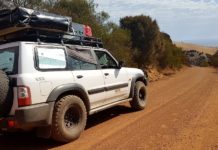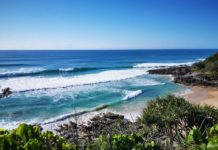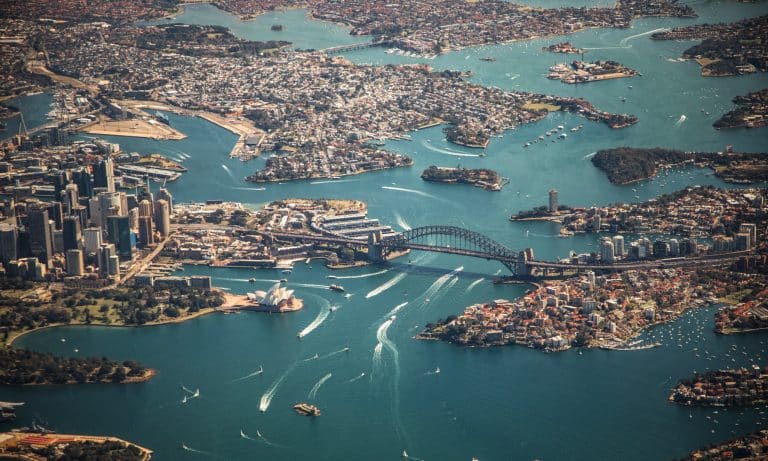
Sydney is one of the most beautiful cities in the world, but it is also one of the most expensive when it comes to accommodation! Whether you’re visiting for a short holiday, an extended stay, or a working holiday, finding the right place to stay can enhance your experience. From luxurious hotels to budget-friendly hostels and cozy apartments, Sydney has something to suit every traveler’s needs and budget. This guide will help you navigate the diverse accommodation options available in Sydney.
⏰ Don’t have time to read the whole article?
Here is a selection of recommended accommodation options to suit any budget:
- Best option for those with a high budget: Kimpton Margot Sydney
- Best option for those with a mid-level budget: YEHS Hotel Sydney QVB
- Best for those on a tighter budget: Sydney Harbour YHA
Table of Contents
Best Sydney’s Neighborhoods to stay
The hardest part of moving to a new city is knowing where to stay. Not knowing the reputation of the neighbourhoods, it is easy to get lost. You may end up paying “too much” or living in an area that does not suit you. These possible disappointments can also affect the first few days of your stay in Australia. We know that that travelling is also about experiences and “mistakes”, but here is our advice on how to make an informed choice.
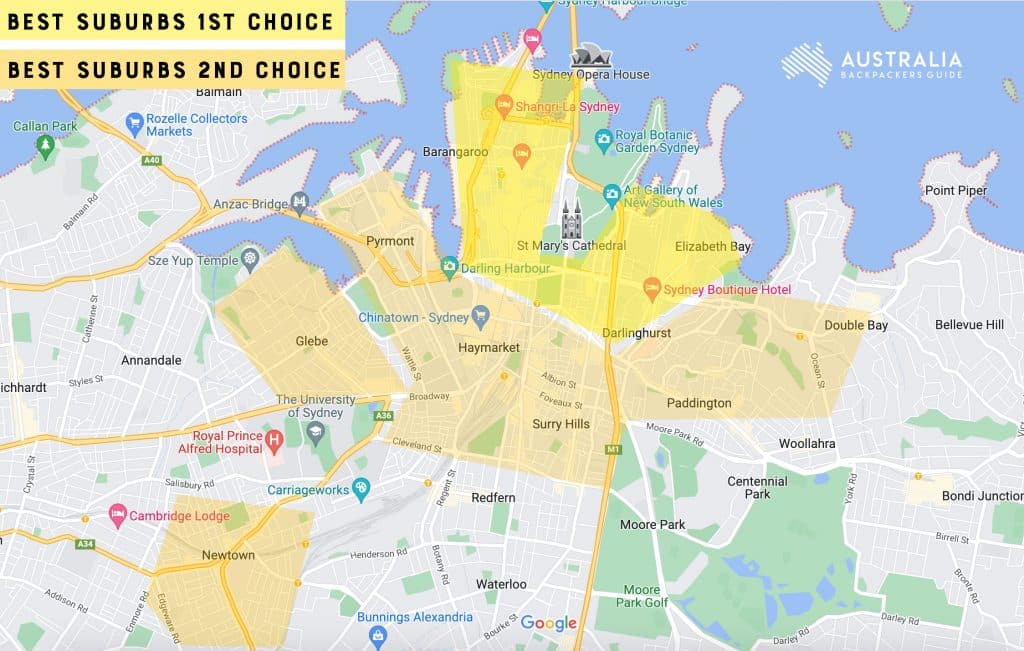
Sydney CBD (Central Business District)
Sydney’s CBD is often the first area where backpackers begin their visits. Transport is expensive but there are a lot of jobs in the centre. It is pretty convenient to live in – or near to – the CBD.
⚠️ Warning ⚠️
Many ads propose shared flats where the rooms are to be shared by several people. The living room will be converted into a bedroom and sometimes even the balconies will be fitted out to make the rent as profitable as possible. There is no need to tell you about the risks and disadvantages associated with this type of practice…
Rent is higher in the centre and there are many bad deals. In the southern part of the CBD (World Square and Chinatown), many of the large towers are inhabited (mainly) by the Asian community and rooms are available in abundance. A large number of French and foreign backpackers occupy some of these towers, on Georges St and Pitt St for example. If you want to live in the centre, avoid the part too far south. These are the so-called “rabbit cages”, where every square metre is inhabited. On the other hand, in these buildings you will often find many services included, such as swimming pools, saunas, jacuzzis and gyms!
Sydney CBD is ideal for those who want to be close to major attractions like the Sydney Opera House, Sydney Harbour Bridge, and Darling Harbour.
The Rocks
Located near the Sydney Harbour Bridge, The Rocks is one of the oldest neighborhoods in Sydney, known for its historic charm, cobblestone streets, and vibrant markets. It’s a great area for boutique hotels and unique stays.
Newtown and Glebe
These areas can be a good alternative to the very centre. They are very accessible from the city centre (just 10 minutes by bus) and are known as more bohemian/artistic areas, lively and full of shops, small cafés, bars and restaurants.
A bohemian neighborhood known for its eclectic mix of bars, cafes, and vintage shops. Newtown and Glebe are ideal for budget-conscious travelers looking for a lively and artistic atmosphere. Hostels, budget hotels, and Airbnb are common here.
Surry Hills
Known for its trendy vibe, Surry Hills is a hotspot for foodies, artists, and young professionals. It’s filled with cafes, bars, and boutique shops. Accommodation options here include boutique hotels, guesthouses, and Airbnb rentals.
Potts Point & Kings Cross
Only 5 minutes by train, or a 20 minute walk from the city centre, King Cross is Sydney’s liveliest neighbourhood. It’s also a hotspot at night. Many hostels are located in this area, rent is not too expensive and you can enjoy the entertainment or activities the city has to offer without straying too far from the CBD. Beware of the noise though… it’s a busy area!
Potts Point is just a short walk from King Cross. It is considered the ‘Little New York’ of Sydney. The area is more upmarket and very pleasant to live in. There are many small cafes and restaurants.
Ultimo & Pyrmont
Ultimo is a bit like the student district of the city. The big UTS university obviously attracts a lot of foreigners who want to stay close to the university.
Pyrmont is a rather quiet and pleasant area to live in, not far from the city centre.
Bondi Beach
If you’re looking for a beachside experience, Bondi Beach is the place to be. It’s famous for its stunning beach, surf culture, and vibrant nightlife. Accommodation options include hostels, serviced apartments, and beachside hotels. Rents are relatively expensive compared to the distance from the city, but this is due to the proximity of the beach. You will also find some nice youth hostels!
To get to the centre, take the bus. The journey takes about 40 minutes (or hop on a bus to Bondi Junction, then use the train).
Manly
A ferry ride away from the CBD, Manly offers a more relaxed beach environment with beautiful beaches and scenic walks. It’s great for families and travelers looking for a quieter stay. Options include hotels, guesthouses, and holiday rentals.
Sydney suburbs
If you are willing to move away from the city to save money, it can be very worthwhile. If you want to get out of the high-rise buildings and take advantage of the famous sharehouses, you’ll have a better chance of finding one within your budget, and a bit of peace and quiet.
- North: North Sydney, Lane Cove, Ryde.
- East: Strathfield, Auburn, Fairefield.
- Au Sud: Marrickville, Rockdale, Randwick, Hurtsville.
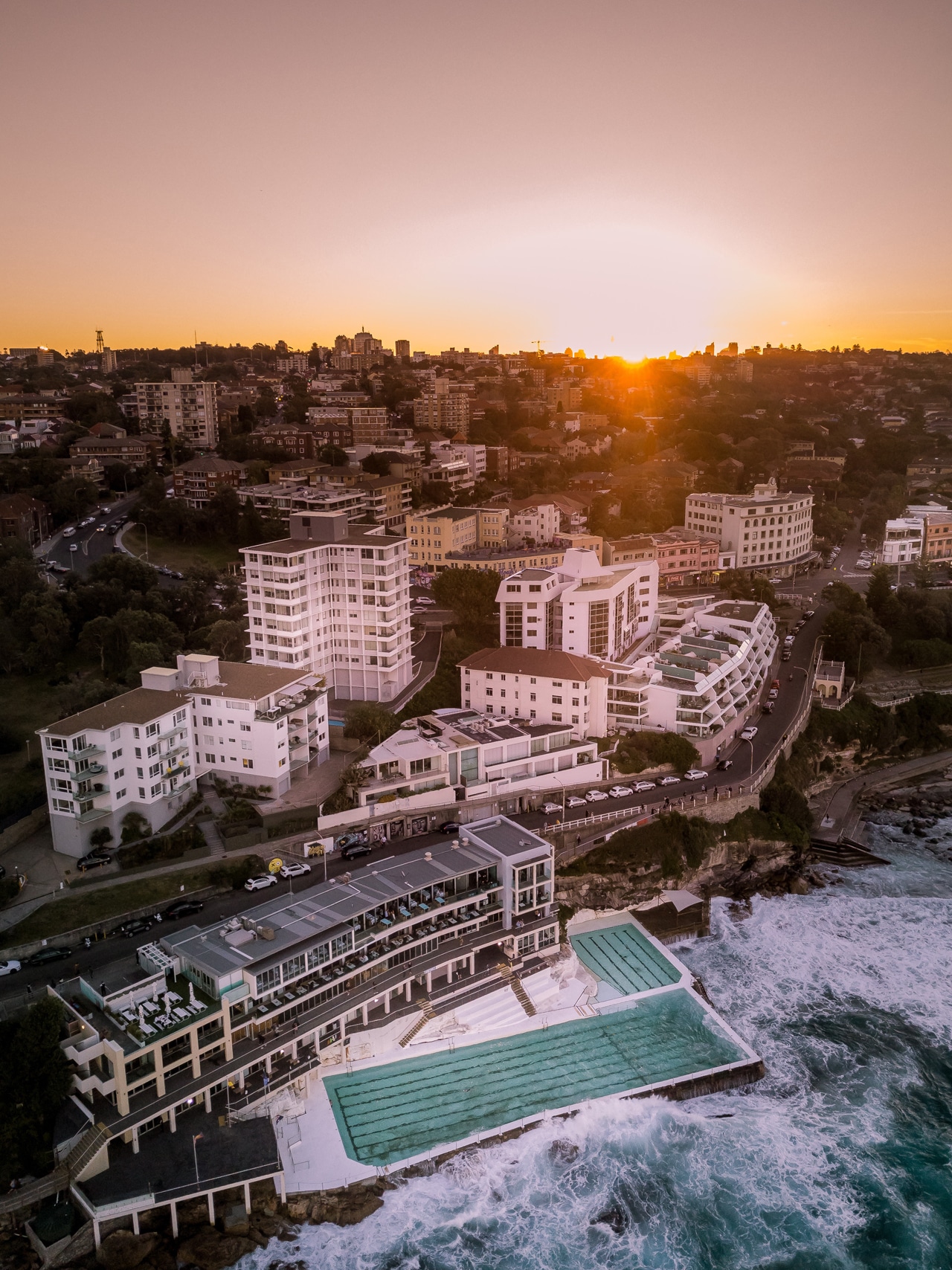
Backpacker Hostels / Youth Hostels
The hostel network in Sydney is extensive, with plenty of options to choose from to suit any budget and your needs. This is probably the cheapest option for accommodation! The cheapest option is to sleep in a dormitory with others, a very common thing to do for those travelling around the country.
How to find your hostel
To find a hostel, you can use comparison sites such as Booking.com for example. This allows you to add your different criteria, such as budget, room type, extra services offered etc. Then you can check the results by browsing the map of Sydney, a great way to make sure the hostel is in a good location.
But if you want a safe bet, we recommend considering those two hostels: First the YHA Harbour as it is right next to the Sydney Opera House and has a rooftop with a 360° view of Sydney. Another option is the Wake up! because it is even more central. In our opinion, they are really among the best hostels in Sydney; well located, very clean and very well rated by travellers!
Before arriving in Sydney or Australia, we would recommend booking a few nights in a hostel for those travelling on a budget. This will allow you to enjoy the city without breaking the bank.
Our top 15 hostels in Sydney
Have a look at our recommendations for hostels in Sydney here.
How much does it cost?
Hostels allow you to stay in Sydney for a handful of dollars (about $40 a night in a dormitory). A small deposit is often required at the beginning of your stay which is then refunded on departure, by returning your room key and leaving the room in good condition after your stay.
Good to know: in Australia, accommodation is paid for by week. Also be aware that rates increase in the high season (November to February). Hostels are often fully booked several weeks in advance for the Christmas and New Year period in high summer.

Hotels
Mid-range hotels
There are many centrally located hotels to choose from so you can enjoy the city without spending a fortune. The Great Southern Hotel Sydney, for example, is very well located (on the main street in the centre) and offers double rooms at around $160 per night. You also have the MegaboomCity on Pitt Street which is a bit cheaper (around $120 a night). But our favourite is the YEHS Hotel Sydney QVB. However, the rates are higher (over $200 per night).
🤍 Our Recommendation: The YEHS Hotel 🤍
Luxury Hotels
Sydney boasts some of the world’s most luxurious hotels, offering high-end amenities and exceptional service. Notable mentions include:
- The Langham: Located in Millers Point, offering stunning views and top-notch facilities.
- Park Hyatt Sydney: Positioned near the Opera House with breathtaking harbor views.
- Shangri-La Hotel: Located in The Rocks, known for its luxury and panoramic views of Sydney Harbour.
Flat Shares
How to find a flat share
To find a flat share, look on “Gumtree“. This site is extremely popular in Australia as it is where individuals can post classified ads for a huge variety of things (cars, furniture, flat share, jobs etc…).
Marketplace on Facebook is also a good way to find a flat share. The advantage is that you can check the Facebook profile of the people posting the ad, but make sure you check all the details.
There are also dedicated websites and mobile apps such as Flatmates or Ozflatmates. Create an account and then you can check out the many offers available and even the profiles of your potential flatmates.
The rules and conditions of flat shares
Just like hostels, when you move into a flat share you will be asked to pay a deposit. Most of the time this is one or two weeks’ rent. The owner or tenant of the accommodation you are staying in is entitled to keep the deposit in case of damage to the premises to pay for repairs.
In Australia, rent is paid weekly (or even every fortnight). This corresponds to the way salaries are paid every week (or in some cases every two weeks). Your first payment will therefore be at the cost of at least two weeks (deposit + one week’s rent) so be prepared to pay the correct amount before you start looking for a flat share.
Beware of scams! The websites Gumtree and Marketplace can be a great help in your search for a flat share. However, popular websites are full of scams. If you have any doubts, you can always visit the accommodation and ask your questions directly. If you are asked for an amount that seems excessive, check all the information beforehand. Don’t hesitate to ask for advice from people around you and on social networks. The government website ‘short-term rental accommodation’ is also available to help you find out what your rights are.
Renting a flat or a house
For those who want a little more privacy, renting a studio apartment can be a solution. Be aware that with a WHV / PVT, it is quite difficult to find an apartment through an agency. The competition is tough and agencies are rather reticent towards backpackers. In general, the minimum lease is 6 months. However, if you have a well-paid job or 2 smaller jobs (between friends or couples) and you plan to stay several months in Sydney, it is possible.
Prepare a good application and don’t hesitate to submit it as soon as you have visited a flat you like. You will need to provide your latest pay slips, a copy of your passport, bank statements, names of guarantors (e.g. your employer), etc.
You can find advertisements on the following websites: Real Estate and Domain.
Good to know: The governmental organisation “Fair Trade” controls rents and helps those who have a problem with their landlord free of charge. If you have any difficulties with your landlord, please contact them for advice.
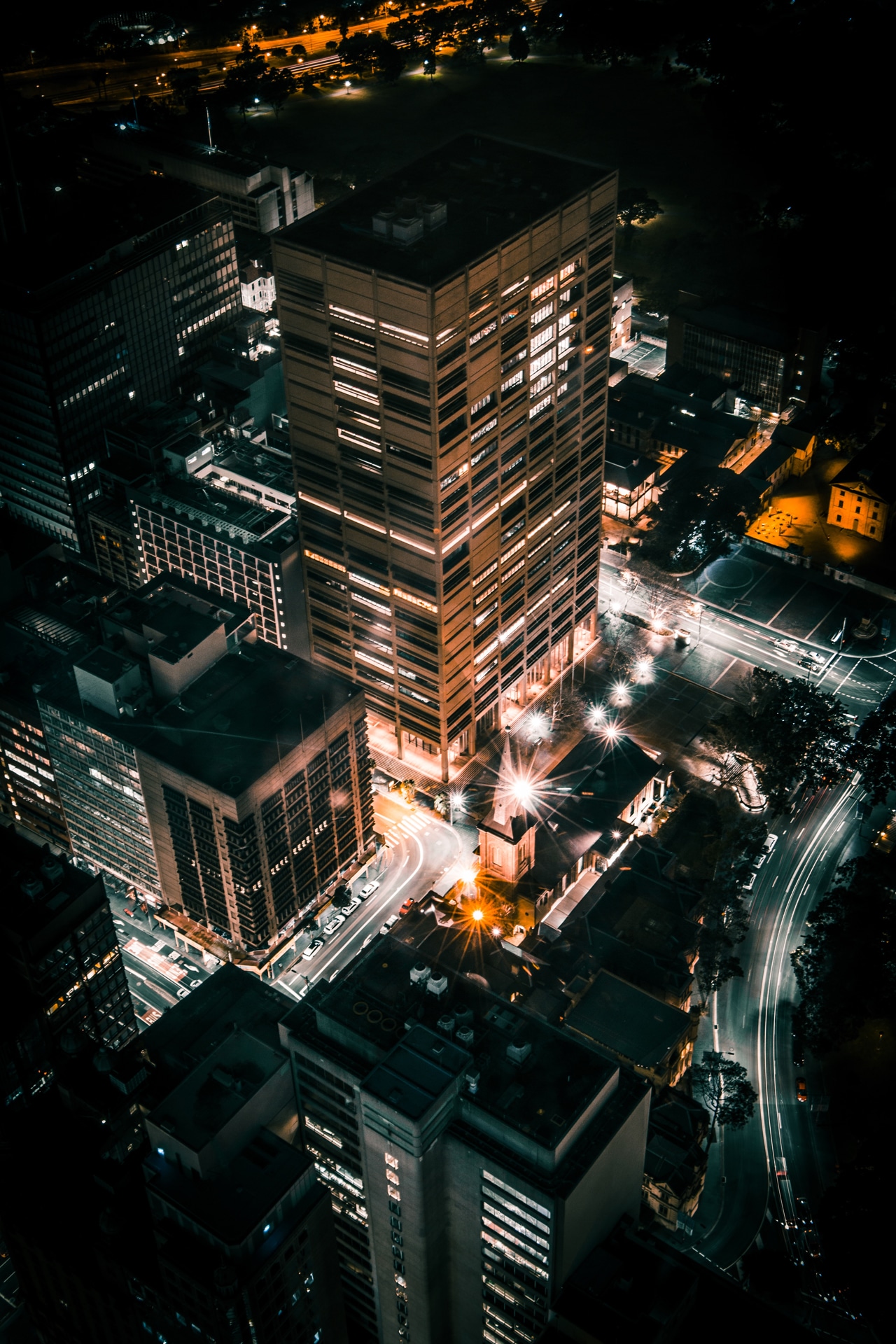
Accommodation prices in Sydney
Prices obviously vary greatly depending on the type of accommodation, the number of occupants and the area. Here are a few examples of prices to give you an idea (prices are indicative).
CBD
- Backpacker Hostel: room for 8/10 people: $200/week
- Backpacker Hostel: private room for 2 people: $850/week ($425/person)
- Hotel (medium budget): room for 2 adults $140 per night.
- Shared flat for 8 people: room for 4 people: $180/week
- Flat for 4 people: single room: about $300/week, room for 2 people (couple/friends): $400/week (or $200/person)
Surrounding areas
- Backpacker Hostel: $200 per week in 8 person dormitory
- Hotel (mid-range): $130 per night
- 4 person apartment: single room: $250/week
- 4-person apartment: double room: $330/week ($165/person)
Suburbs
House with garden for 4 people: single room: $200/week
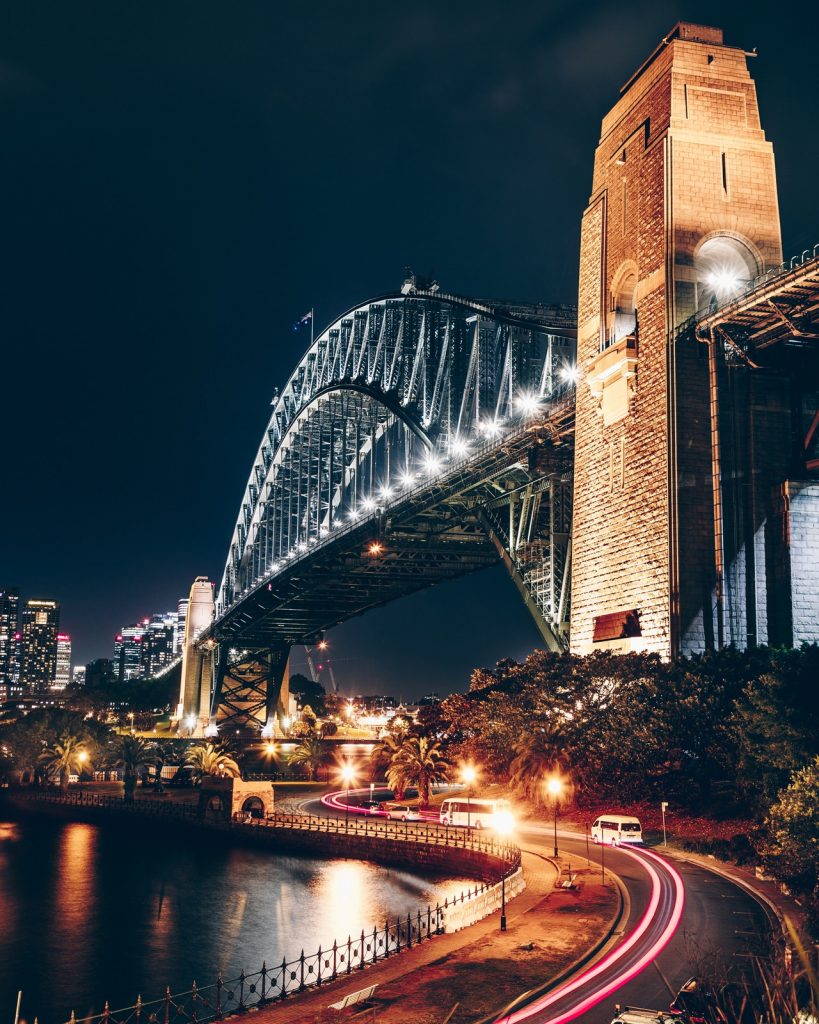
Other accommodation options
- Au pair: You are housed and fed in an Australian family in exchange for childcare and/or household chores (part time).
- Homestay: There are paying organisations that allow you to stay with a host family who are registered with them.
- Couchsurfing: Allows you to stay with a host family for a few days free of charge.
- Wwoofing or HelpX: these platforms offer the possibility of staying with hosts in exchange for a few hours of work per day.
- 9flats: to book a flat, house or room online through a private person.
- Airbnb: This website has thousands of private rooms or accommodation. Rates are a little more expensive than a hostel.
- Wimdu: This site offers home-stay accommodation, which can be a good option for meeting locals and avoiding the hustle and bustle of a backpacker hostel.
Booking tips
Book Early: Sydney is a popular destination, especially during peak seasons like summer (December to February) and major events such as New Year’s Eve and the Sydney Festival. Booking early ensures you get the best selection and prices.
Consider Location: Choose accommodation based on your itinerary. Staying in the CBD or The Rocks is convenient for sightseeing, while Bondi or Manly is better for beach lovers. Surry Hills and Newtown are great for nightlife and dining.
Read Reviews: Check reviews on booking sites like TripAdvisor, Booking.com, and Airbnb. Reviews provide insights into the quality, cleanliness, and service of the accommodation.
Getting around the city
Getting to the city centre from the airport
Sydney International Airport is located 8km from the city centre. There are several options (and prices) for getting there.
Getting to Sydney by train
From the airport, it’s easy to get to the city centre by train. The Airport Link is the train that connects the airport to the city centre. It runs every 10 minutes between 5am and midnight, 7 days a week. When you arrive at the airport, follow the signs to the train station which is within easy walking distance of about 5 minutes. The City is 13 minutes from the airport by train. The journey costs $17.69 per person in off-peak hours and $18.79 in peak hours.
You can buy a ticket at the airport at one of the self-service kiosks. If you are staying in Sydney for a while, you can buy an Opal card directly. This is the reloadable ticket-card for Sydney. This card allows you to use all public transport (train, ferry, bus) and offers reduced rates and price-caps. You can buy it directly at the airport, for example at the Relay or WHSmith shops.
Getting to central Sydney by shuttle bus
If you have booked a hostel or hotel, a shuttle service may be available. This service will usually be free or inexpensive. Please check with your hotel/hostel for this option.
Getting to central Sydney by taxi
Taxis are easily available outside the airport. Again, follow the signs when you arrive. There may be a queue for a taxi at certain times. Travel time is 20 minutes (except during rush hour). Finally, the journey to the centre will cost you about $50, which may be a good option if there are several of you sharing the cost, or if you have a large bag that is difficult to carry.
Getting to the centre of Sydney by Uber
You can also opt for the Uber option. It’s best to download the app when you arrive on the free airport wi-fi if you don’t already have it. The journey time will be the same as for a taxi outside of rush hour. Expect to pay $45 for a regular Uber. Again, this is a good option if you have a group of people to share the cost or if you have a lot of luggage. The mobile app Didi is another option to Uber (however beware as it is often more expensive than Uber).
Getting around Sydney
You’ll have several options tp get around Sydney once you have arrived. You can easily explore the city on foot. The centre is not very large, so it is easy to get around the CBD, Darling Harbour, the Opera House, the Royal Botanic Garden etc.
If you want to go further afield, then you should consider using public transport. The train and bus network makes it easy to get around. All you need to do is buy an Opal card at a newsagent’s, train station entrance office or Woolworths. There is no charge for the card but you will need to put at least $20 of credit on it. You can then top it up as you use it.
The principle is simple: you have to “tap on” when you get on the transport, and “tap off” when you get off. The price varies according to the journey.




















